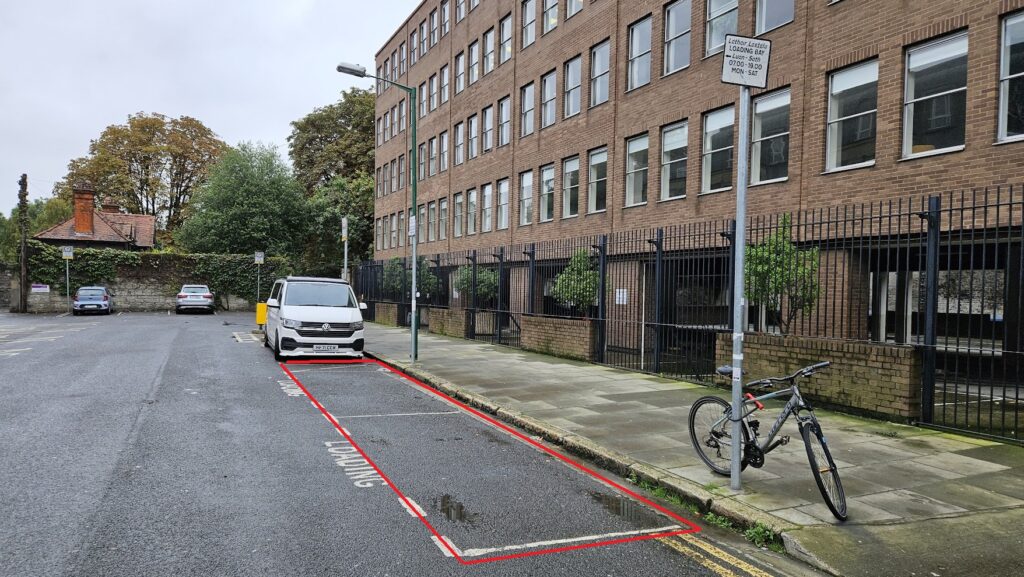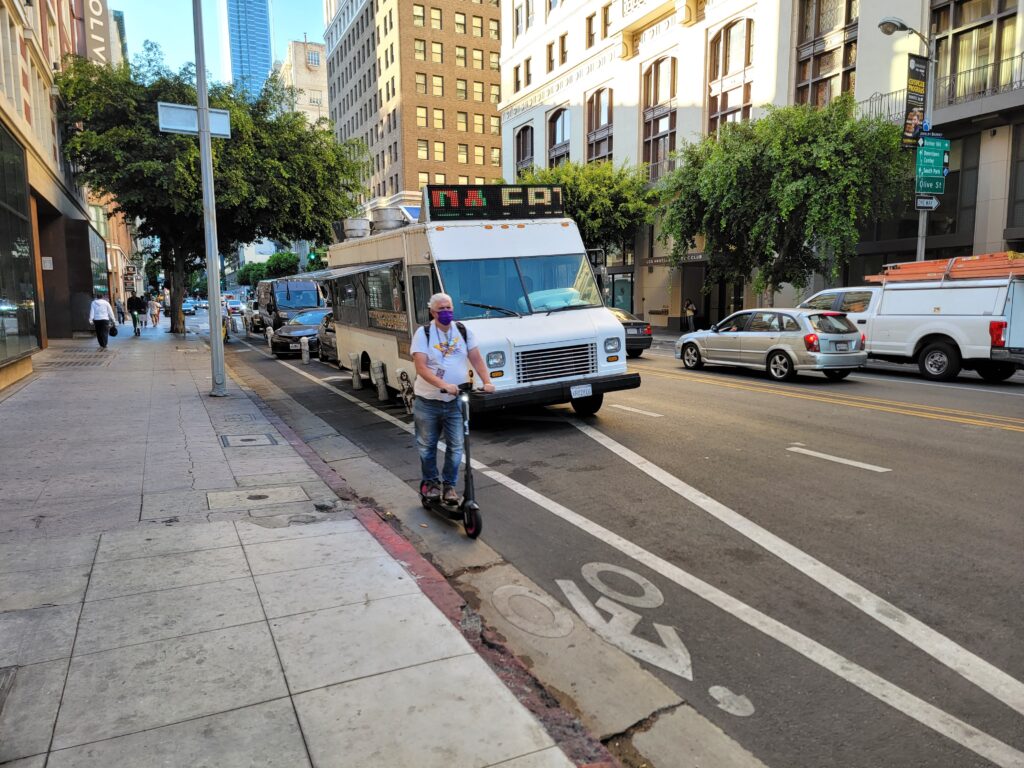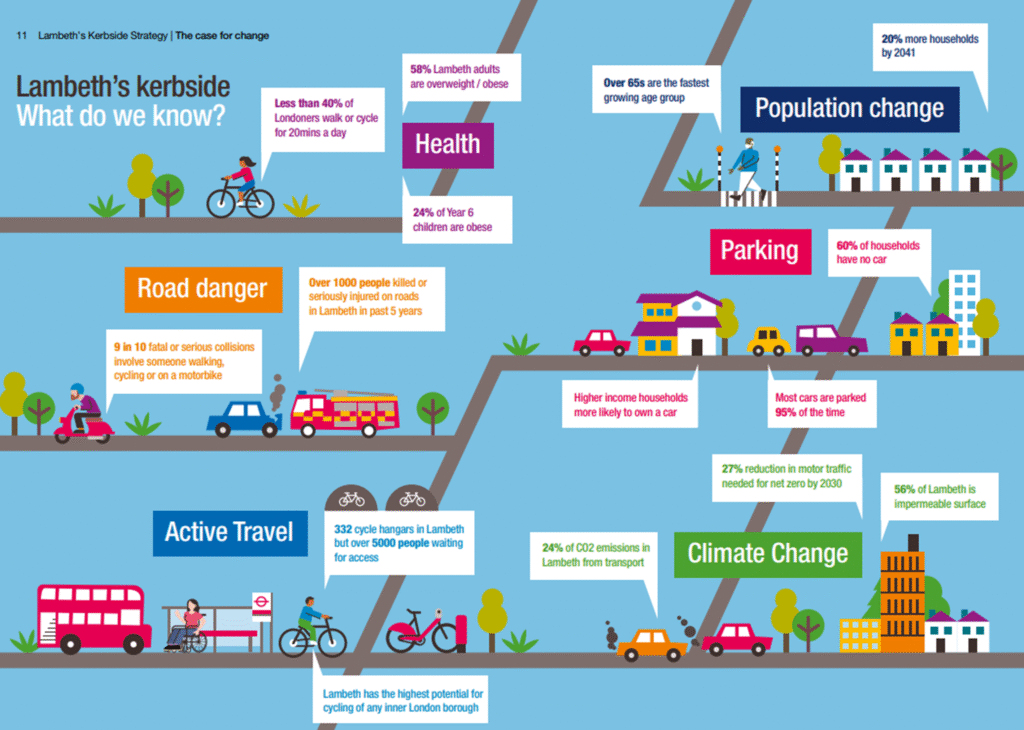Part 1 of 2 in a series on curbside management strategies and why cities need one
Cities have digitized traffic signals, fare payment, and safety systems, but the curb remains a patchwork of analog signs, meters, and guesswork. And yet, the curb is one of the busiest, most contested spaces in the public realm.
A curbside management strategy, supported by a digital inventory, isn’t just a tech upgrade – it’s foundational to help cities understand how space is actually used, and how it should be used. The curb’s role is growing – and aligning it with broader goals like equity, climate resilience, and multimodal access is no longer optional. These two blog posts will explore how cities can elevate curbside space from an afterthought to a strategic asset, fully integrating it into transportation and mobility planning.
What Is the Curbside, Really?
The curbside is the thin, shared edge of the roadway – the space between the sidewalk and the travel lanes (or sometimes it is the travel lane). It’s where cars park, delivery trucks unload, Uber and Lyft drivers pick up passengers, scooters get parked, and cafés try to squeeze in a patio or outdoor dining set up.

The Curbside (outlined in red)
The Curbside We Knew (and the One We Have Now)
Historically, curb space was largely reserved for one thing: parking. Cities regulated it with signs and meters, balancing a mix of time limits and enforcement. It was the quiet corner of transportation planning.
Fast forward to today, and the curb is anything but quiet. The past 10-15 years has brought:
- The explosion of e-commerce deliveries
- The rise of ride-hailing services
- Outdoor dining during and especially after COVID
- Micromobility systems (and their growing pains)
- Discussions around curb pricing, freight prioritization, and more
It’s no longer a question of if there are competing demands – it’s how to manage them fairly and effectively.

Scooters and food trucks and parking, oh my
Enter the Curbside Management Strategy
A Curbside Management Strategy (CMS) is a city’s playbook for how curb space should be allocated and used. It’s not just about rules and signage — it’s about goals, priorities, and trade-offs.
My definition?
Curbside management is the process of applying a consistent, equitable, and data-informed framework to allocate curb space for different uses across a city’s streets and corridors.
In short, it’s a system for answering big questions:
- Who gets access to the curb, and when?
- How do we balance competing users?
- What’s the right use in the right place?
- And how can we support broader goals — like equity, climate resilience, or reducing congestion — through better curb policies?
It’s part technical exercise, part values-driven decision-making.
Who’s Doing This Work?
A growing number of cities are realizing that curbside policy deserves more than reactive signage and piecemeal changes. Toronto was one of the first. Starting back in 2015, and wrapping up late 2016/early 2017, Toronto became the second or third city in North America to formally adopt a curbside strategy, with limited examples to draw from. It required creativity, consensus-building, and a lot of stakeholder engagement and review of best practices.
Since then, the field has grown. In Southern California, (prior to Parkicity) Peter Richards worked with the Southern California Association of Governments (SCAG) on a regional curb space management study, which tackled the issue at a multi-jurisdictional scale – from dense downtowns to sprawling suburbs. And internationally, places like London’s Borough of Lambeth, UK, are making the curb (or ‘kerb’, as the spell it in the UK) central to sustainability, public space, and climate goals.

Lambeth’s Case for Change
These strategies all look different, but they share common ingredients:
- A data-driven understanding of how the curb is used today
- A clear set of principles for prioritizing uses
- A framework for applying those priorities by location or street type
- Tools and policies to implement change — whether that’s signage, enforcement, pricing, or programming
In Part 2, we’ll look at where curbside strategy fits in larger city planning efforts – and why it should be embedded into everything from Transportation Master Plans to TDM programs and engineering studies.